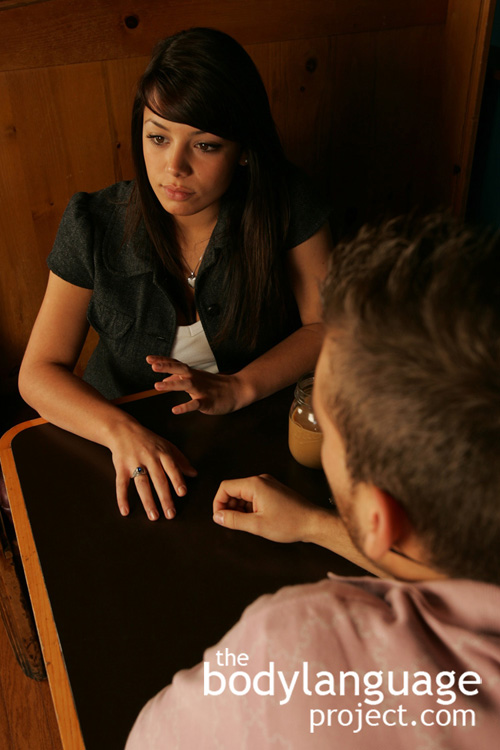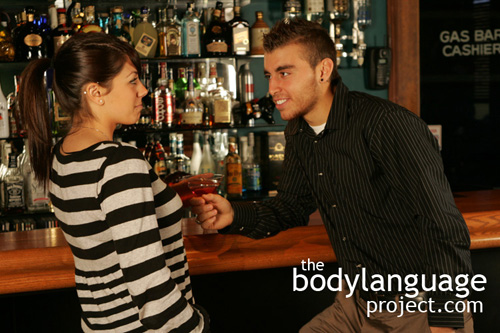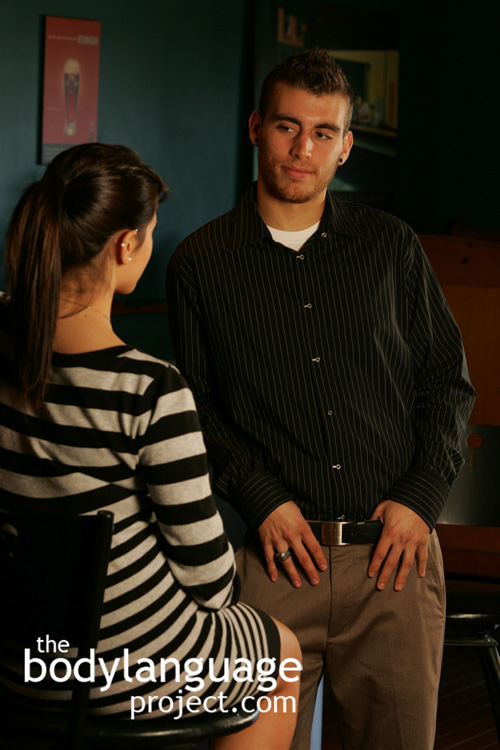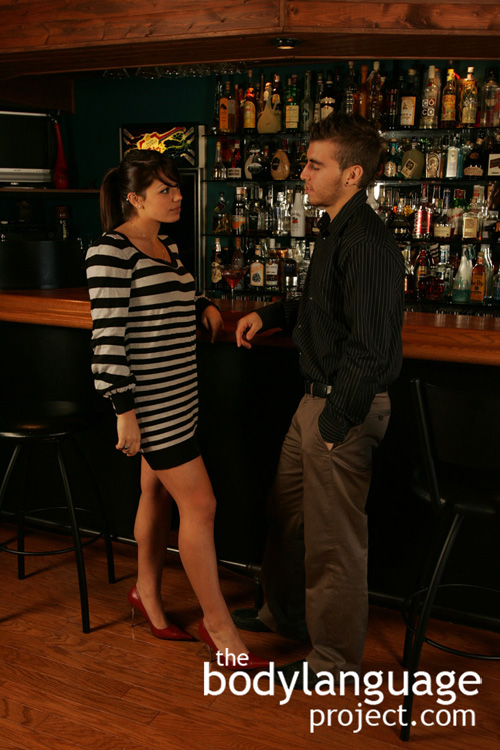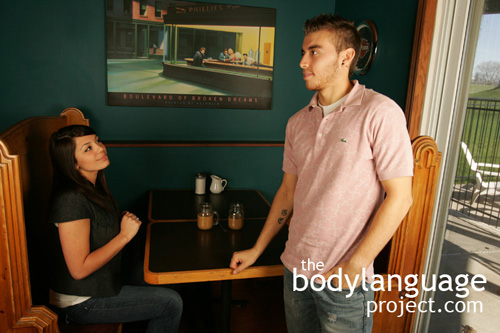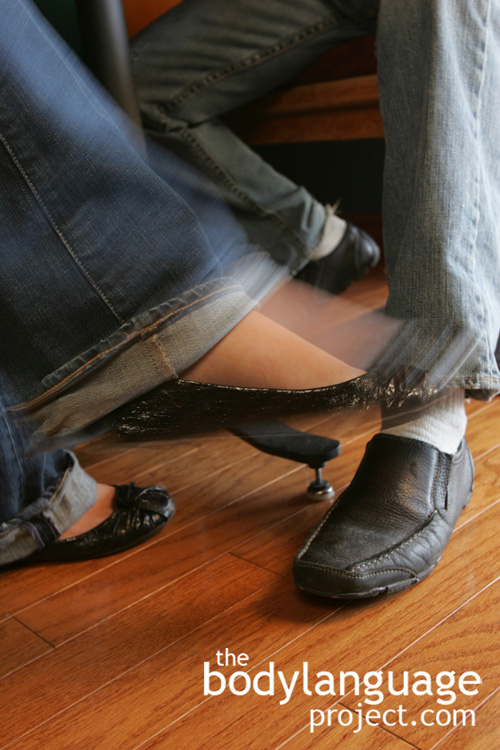The hand steeple happens by propping up the fingers of on hand, with the finger of the other hand, to form a bridge. In this posture fingers are not interlocked and the palms do not touch. The word steepling comes from their similarity to the pointed roof of a church steeple. Rocking, might accompany the steeple where the hands move back and forth by adding and reducing pressure between them. The steeple can be placed low on a lap, or seen hovering slightly above the lap. Other times the steeple is in full view of others with the elbows propped up on the table. The steepler can hold the posture so high that they have to look through the steeple to see others. Hand steeples frequently occur by themselves as standalone cues, and don’t require additional body language in a cluster to have predictable meaning.
The steepler is someone that is confident, sometime overconfident, genuine, authoritative, and particularly evaluative of others around him. Confidence, in this case, is held in the power and control they possess and also in knowing things that other people do not, so steepling says “I have access to hidden information (and life experience) and this is the source of my power and control over you.” Steeplers are found carrying the gesture when around subordinates, or whenever they seem to have the upper hand. Donald Trump performed the steeple frequently on his television show The Apprentice, in preparation, of all things, to fire his next apprentice! His steepling was an obvious cue to the power he had over his subordinates. This gesture is effective if you already possess power or want others to think you do, but it is ineffective in team building, since it comes off as arrogant. It does have subconscious manipulative properties though, such as bluffing in poker but in most cases, this gesture is only as effective as that which can be backed up with real confidence and true access to valuable hidden information.
Superiors will also be seen using this gesture in meetings and when giving orders and the higher the steeple is held, the greater the arrogance it depicts. In extreme forms, the person carrying the gesture can be seen “looking right through their hands” between the triangle formed by the pent up fingers and the thumbs. A more subtle version is the hidden steeple of which the sender could be trying to hide or shelter their opinion from view by keeping the steepled fingers below the table. The lower steeple is more often used by women and when someone is listening rather than speaking. Hidden steepling refers to hidden confidence or a desire to limit arrogance in attempt to appear more open and accepting. The underlying meaning of the steeple is still present however, yet women should show more overt confidence by actively mirroring or initiating steepling on their own to gain an advantage in office situation, rather than letting their confidence fall to the way side. In all confident steepling the hands remain stand-alone, or the elbows serve to prop the hands up from a table. When the hands are steepled, but holding support to the head, it does not signal confidence, but rather boredom, self consciousness, or awkwardness.
 The steeple can occur in body language clusters as well, but what is important is not what happens after the steepling, as in the chin stroke and eye glass language, but rather what happens preceding the steepling. Therefore, by watching for positive open postures such as palms up and arms un-crossed or closed postures such as arms crossed, touching the nose or face and avoiding eye contact, we can tell if the person is trying to be honest or manipulative with his or her apparent power. In other words, steepling is a finish posture serving to punctuate a body language clue cluster rather than the other way around. Steepling can also ebb and flow along with confidence to what is being said which can be useful in negotiations or in arguments. If something is said to drop confidence the steepling might be broken in favour of interlocked hands as if praying but then quickly return when a person feels that their position has improved. Interlocked fingers is a signal of low confidence and the fingers might even be seen wringing themselves. Lawyers quickly learn to control this nonverbal cue in favour of constant steepling rather than any other gesture.
The steeple can occur in body language clusters as well, but what is important is not what happens after the steepling, as in the chin stroke and eye glass language, but rather what happens preceding the steepling. Therefore, by watching for positive open postures such as palms up and arms un-crossed or closed postures such as arms crossed, touching the nose or face and avoiding eye contact, we can tell if the person is trying to be honest or manipulative with his or her apparent power. In other words, steepling is a finish posture serving to punctuate a body language clue cluster rather than the other way around. Steepling can also ebb and flow along with confidence to what is being said which can be useful in negotiations or in arguments. If something is said to drop confidence the steepling might be broken in favour of interlocked hands as if praying but then quickly return when a person feels that their position has improved. Interlocked fingers is a signal of low confidence and the fingers might even be seen wringing themselves. Lawyers quickly learn to control this nonverbal cue in favour of constant steepling rather than any other gesture.



